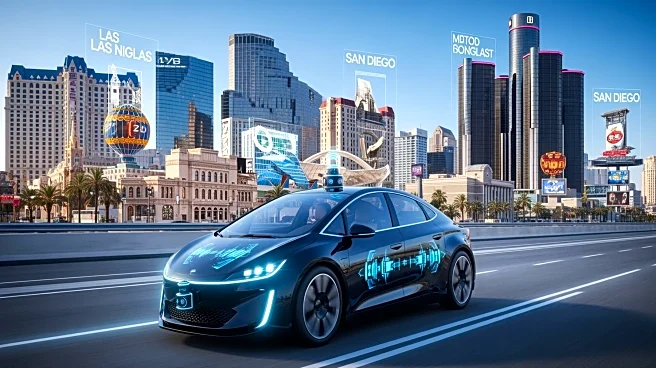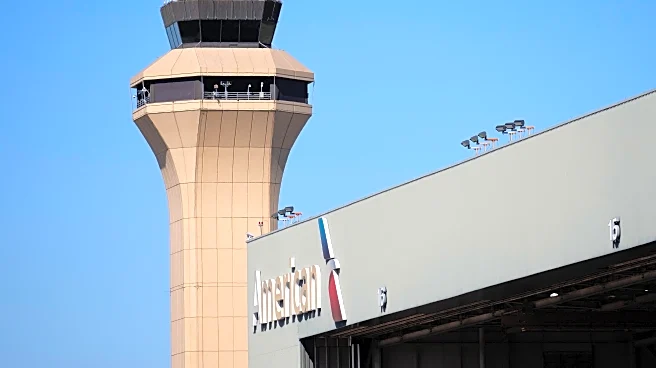What's Happening?
Waymo LLC has announced the expansion of its autonomous ride-hailing service to three new U.S. cities: Las Vegas, San Diego, and Detroit. The company has begun operations in these cities with a fleet of Jaguar I-PACE and Zeekr RT vehicles equipped with its sixth-generation
Waymo Driver technology. This expansion follows Waymo's previous deployments in cities like Phoenix, San Francisco, Los Angeles, and Austin, where it has already provided over 10 million paid rides. The company plans to begin serving riders in San Diego next year and in Las Vegas by the summer of 2026, with no specific timeline yet for Detroit.
Why It's Important?
Waymo's expansion into new cities signifies a major advancement in the adoption of autonomous vehicle technology in the U.S. The move could accelerate the integration of self-driving cars into everyday transportation, potentially reducing traffic congestion and emissions while increasing accessibility to ride-hailing services. As Waymo continues to expand, it sets a precedent for other companies in the autonomous vehicle industry, potentially driving further innovation and competition. The deployment in diverse urban environments also provides valuable data for improving the technology's adaptability to different road conditions and traffic patterns.
What's Next?
Waymo's future plans include further expansion into international markets such as London and Tokyo, as well as additional U.S. cities like Miami, Atlanta, Dallas, and Nashville. The company is also preparing to tackle the challenges of operating in snowy conditions, with plans to launch services in Washington, D.C., and potential interest in Boston. As Waymo continues to refine its technology, it may face regulatory hurdles and competition from other autonomous vehicle companies, which could influence the pace and scope of its expansion.
Beyond the Headlines
The expansion of Waymo's services raises important questions about the future of urban mobility and the role of autonomous vehicles in society. Ethical considerations, such as job displacement for traditional drivers and the need for robust safety measures, will be critical as the technology becomes more widespread. Additionally, the success of autonomous ride-hailing services could lead to significant shifts in urban planning and infrastructure development, as cities adapt to accommodate new transportation models.
















